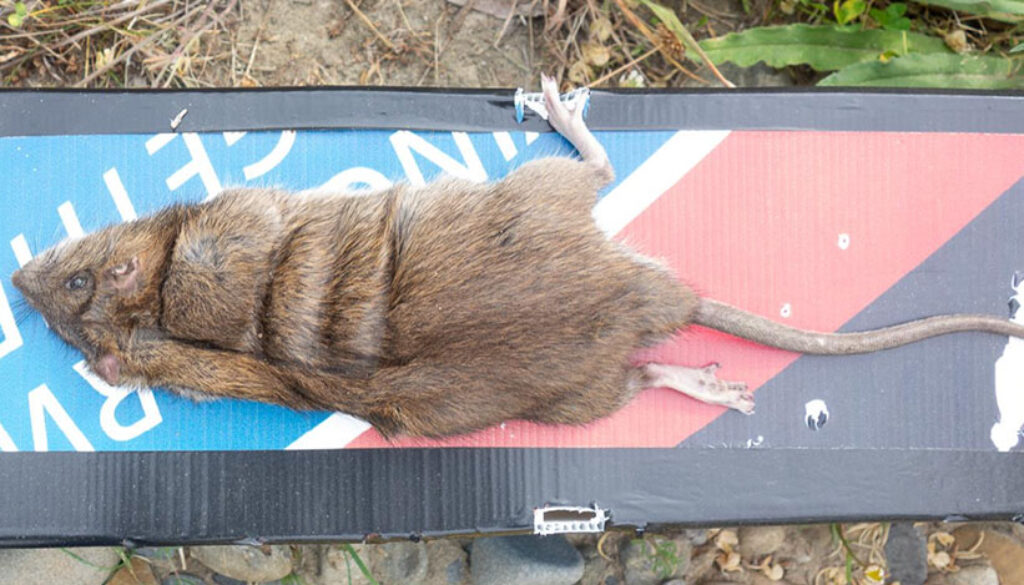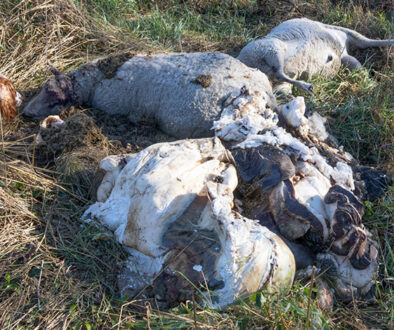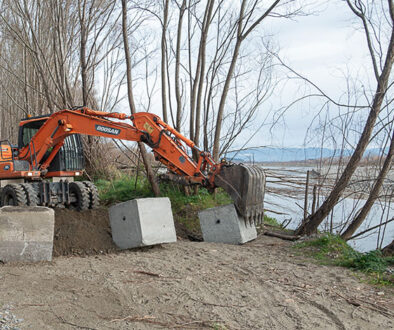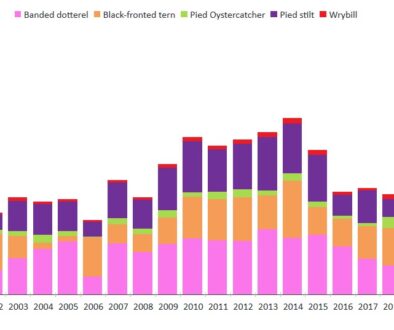Ashley River & Estuary Trapping Update
River Traps
The below graph shows a big increase in catch over that in October.
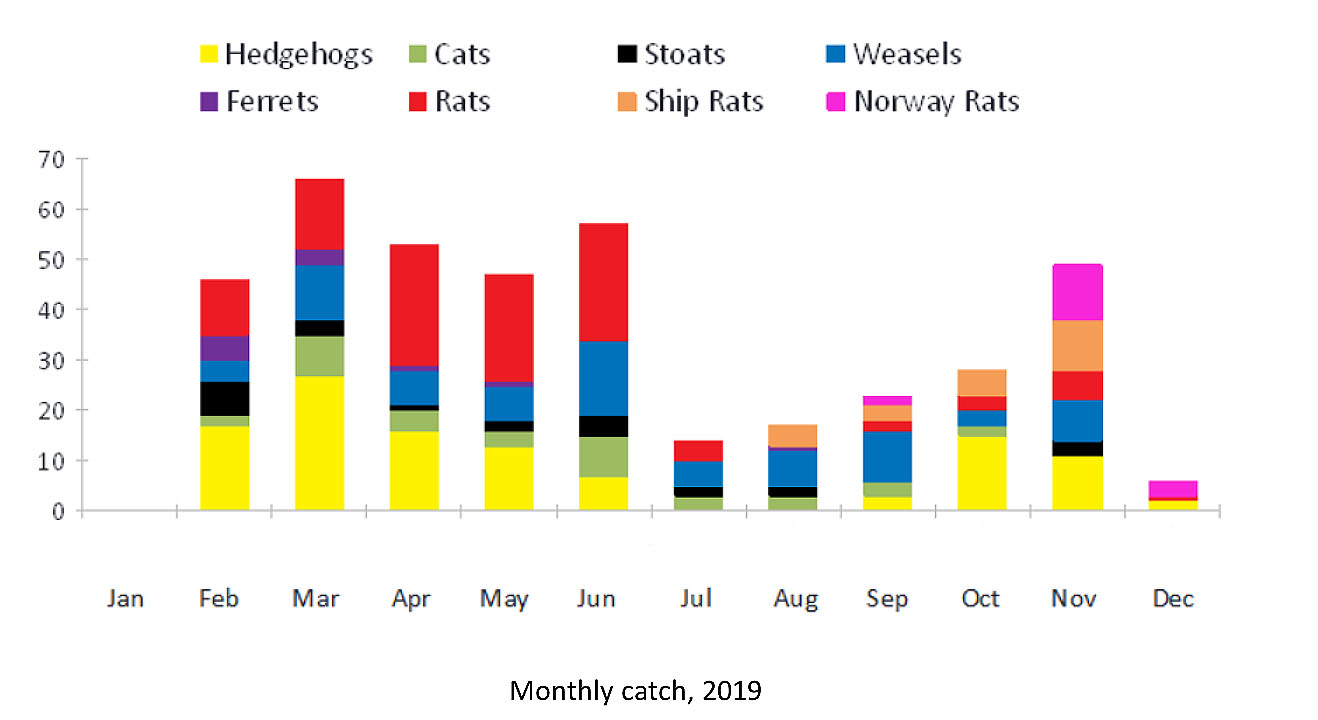
However, the next graph suggests that most of the increase was from two of the new colony trap lines. In fact, catch from the permanent trap lines in November was 32 predators, only 5 more than in October. This is a good result.
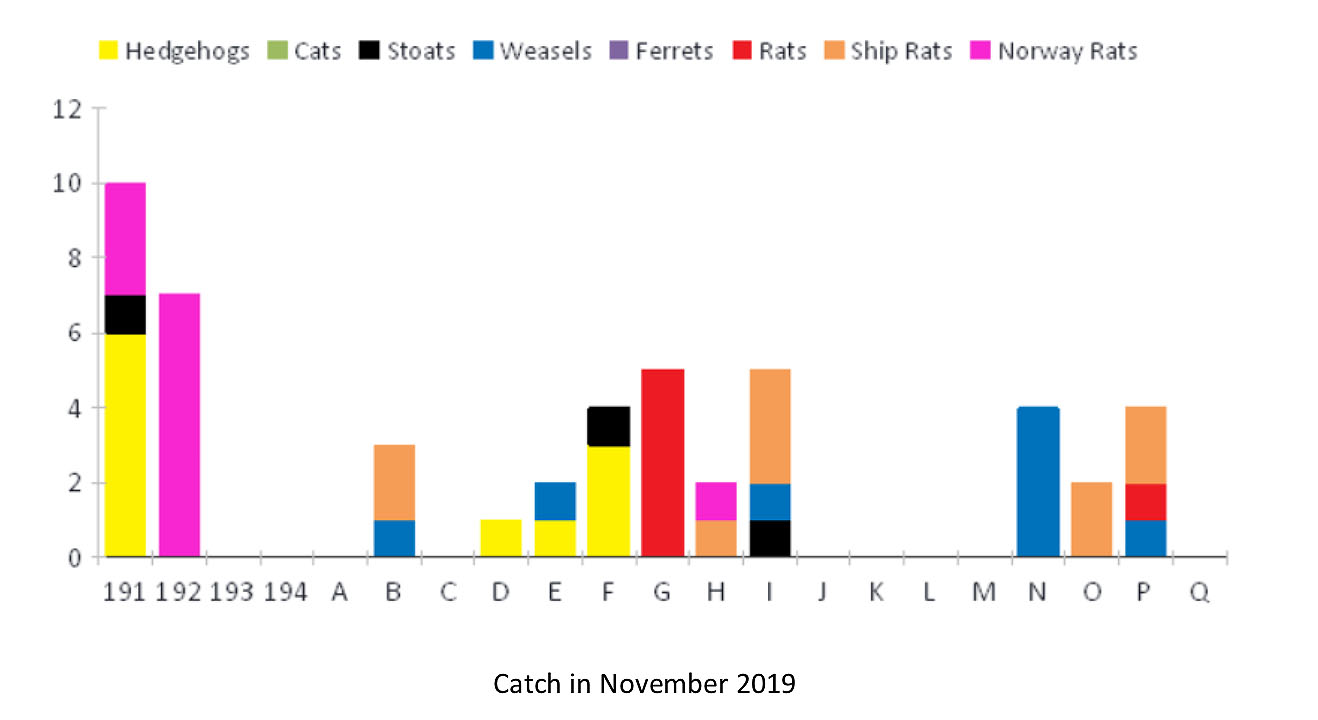
The two colony trap lines, 191 and 192, had significantly more catch than any other line. 192 (“Railway” black-billed gull and black-fronted tern colony, about 1km downstream from the railway bridge) had seven Norway rats, whilst permanent trap lines on the berms to the north and south had no catch at all. The following map shows trap locations and catch – 4 traps have caught between 1 and 3 Norway rats apiece. These traps are all within 20m of the river – Norway rats are also known as water rats for a reason.
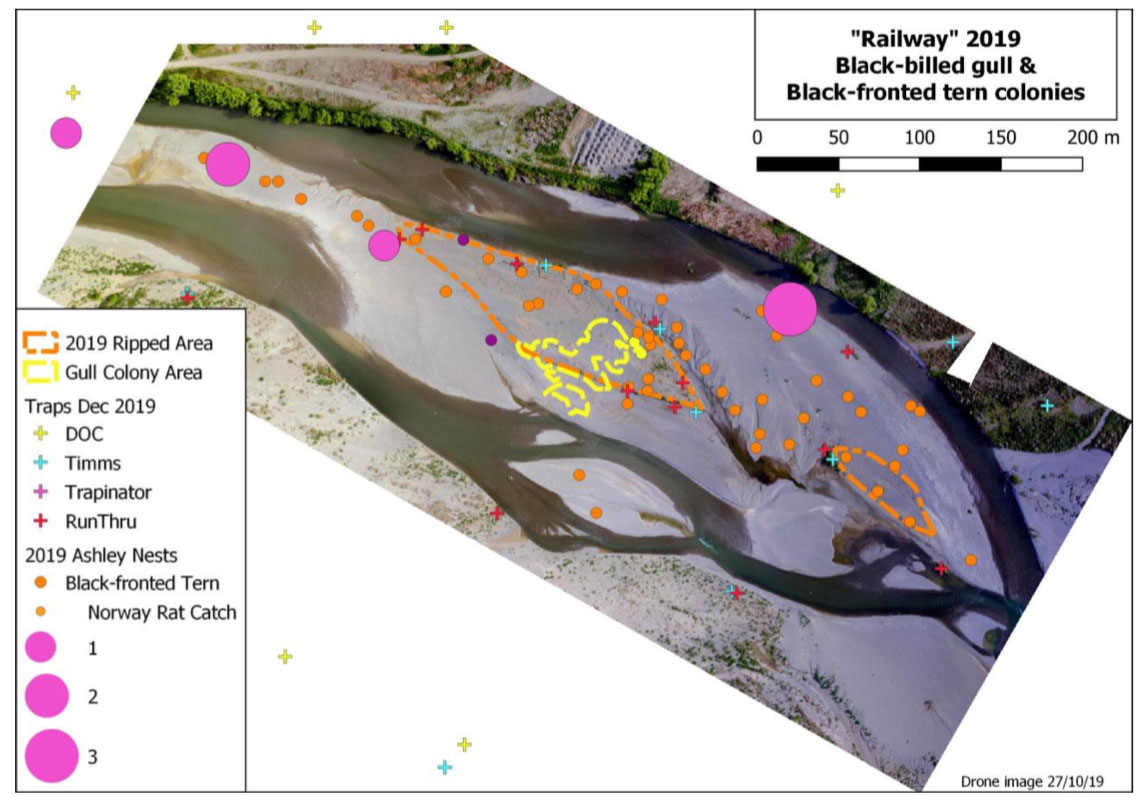
Despite the early installation of the traps (there are now 24 on Line 192) at the Railway colonies, more than half of the tern eggs were lost – this appears to have been due to rats. These were most of the nests to the east of the gull colony. Those to the west do not appear to have been predated, eggs were hatched and some chicks were seen. After hatching, adult terns were still in the area and aggressively warning off people – indicating that difficult to see chicks were still present.
The gull colony has been going well and there have been two big increases in numbers. At one stage there were about 4,300 on site, this has stabilized down to around 2,500 with approximately 1,500 nests. This is by far the biggest colony of black-billed gulls on the Ashley River in the last 20 years. The first chicks were seen on 22 November and by 3 December there were hundreds.
From last years’ experience, the danger time for gull chicks is likely to be when they are close to fledging, or soon after when there are fewer adults around. Last year harriers caught a number of chicks when they were about to fly, or newly flying. Ground predators, perhaps cats, stoats or ferrets also caught a number. Evidence for this predation was piles of feathers. Rats may perhaps have eaten some gull eggs, but it would be a brave rat that would risk being pecked to death by a horde of adult black-billed gulls. Only rats have been caught on the island so far, but later on it seems likely that other predators will make their way there.
Pied stilts, banded dotterels and probably a pair of pied oystercatchers seem to have also successfully hatched eggs in this area.
In the last few days new vehicle tracks have appeared on the island. A 4wd went within 20m of gull nests and a motorbike within about a metre of nests. This is despite ARRG signs and some new ECan signage.
The second colony where there was a large predator catch was the tern colony on the south side of the river near where the stopbank meets Mt Thomas Road. Here 13 tern nests were found – perhaps only half of what actually existed. To find all the nests would have involved walking 5m lines across the entire area – which was done at the Railway colony. This is very boring and time-consuming. The Thomas colony seems to have been successful, several tern chicks have been seen and adult activity has continued after hatching. Recently several new nests have been made. A pair of wrybill successfully hatched chicks in this area, as it seems have several pied stilts and banded dotterels.
There are 18 traps at the Thomas colony, most are on a gravel bar to the west of the colony. This has quite thick lupin cover. The colony is on very bare gravel with only some driftwood and logs to provide cover for predators. Most of the catch has been on the lupin-covered gravel bar with 6 hedgehogs caught here this month, also 1 stoat and 1 Norway rat. Two Norway rats were caught this month in the actual colony area. The next map shows the location of predators caught to date. All but one of the Norway rats were caught in the new run-through style DOC 150 traps within a few metres of water. There are no permanent trap lines near this colony.
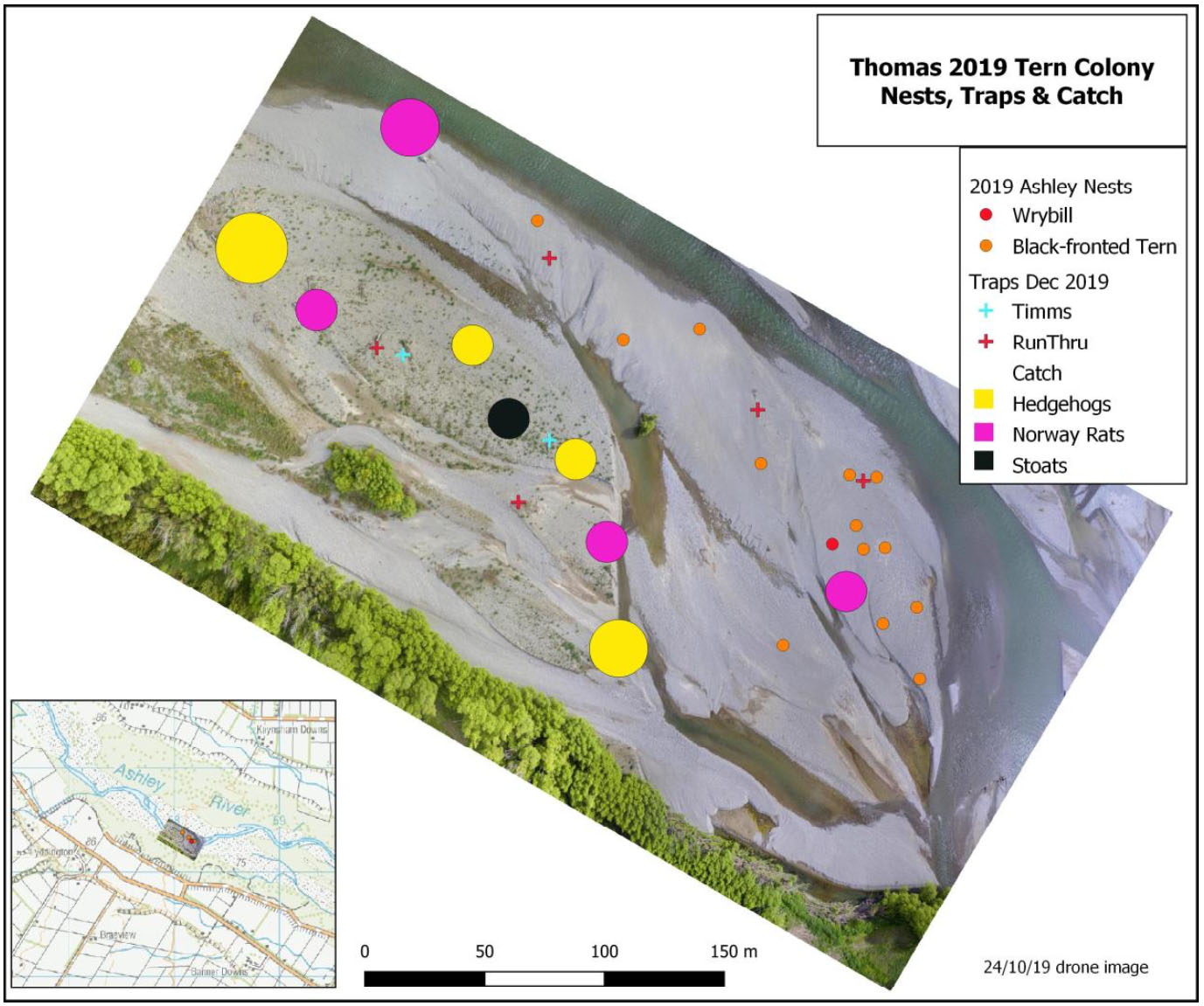
It remains important to determine the type of rat caught in traps – as from evidence to date, only Norway rats were caught in or close to the colony areas. They seem to be only rarely caught on the berms and seem to preferentially live near the active channels of the river. From evidence this year at the Railway colony, and last year at the Swamp Road gravel extraction site, Norway rats pose a major threat to black-fronted tern, banded dotterel, and sometimes wrybill eggs. We cannot sustain permanent trapping near the water as too many expensive traps would be lost in floods. So it is
recommended that we experiment with some cheap ordinary rat traps in driftwood or logs close to the river. So far we have been lucky that there haven’t been any floods to wash away our temporary traps.
There are only two species of rat that will occur along the Ashley: ship rats and Norway rats (pictured at the top of this post.). The latter is a bigger-bodied rat but the distinguishing features are the tail and ears. Norway rats have a tail shorter than their body and short ears. Ship rats have tails at least as long as their bodies and ears that would wrap over their eyes. Ship rats may not pose a threat to the braided river birds, but they certainly do to the fantails, grey warblers and various invertebrates etc along the berms. If a trapper just reports a rat caught, I record it as such. Sometimes the rat will be too dead to distinguish the species.

From the Thomas colony experience it appears that hedgehogs don’t like crossing water or leaving the cover of vegetation – even if there is a thriving tern colony nearby. In years of thicker weed infestation they would be more of a threat than they are this year. Our weasel catch remains high, but there is no evidence so far that they threaten the nesting braided river birds.
No predators have been caught to date in 7 traps around a second black-billed gull colony and a small black-fronted tern colony about a kilometre upstream from the SH1 bridge. At last count there were 690 gulls here and 4 tern nests have been found. Our permanent trap lines don’t extend this far down the river.
There is another tern colony about 1km upstream from the airport. The first nest was found here during the annual survey on 16 November. Ten have now been found and more eggs are being laid. There appear to have been several stilt and oystercatcher nests in the area as well. The four traps have so far caught nothing. Lines G and Q are to the north and south of this colony.
Several trappers have had little or no catch this month. But we surely are making a difference, 411 predators have been caught since 1 February 2019:
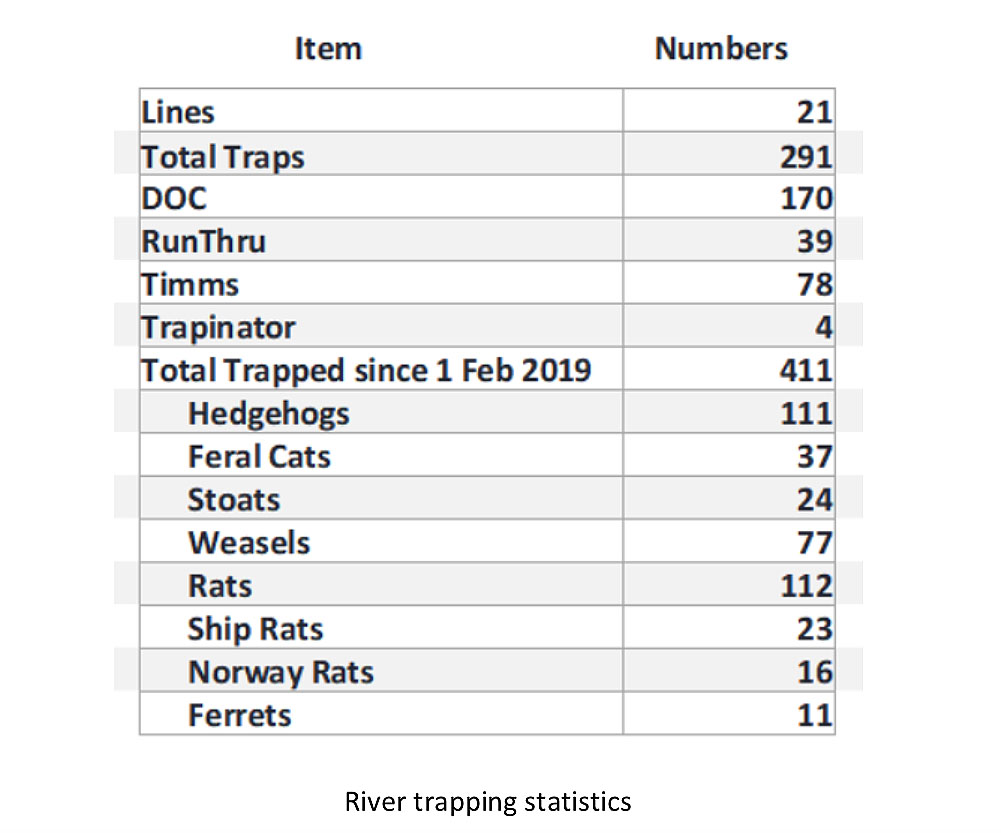
Estuary Traps
Catch this month increased quite markedly over that in October, and was also significantly higher than in the same month last year:
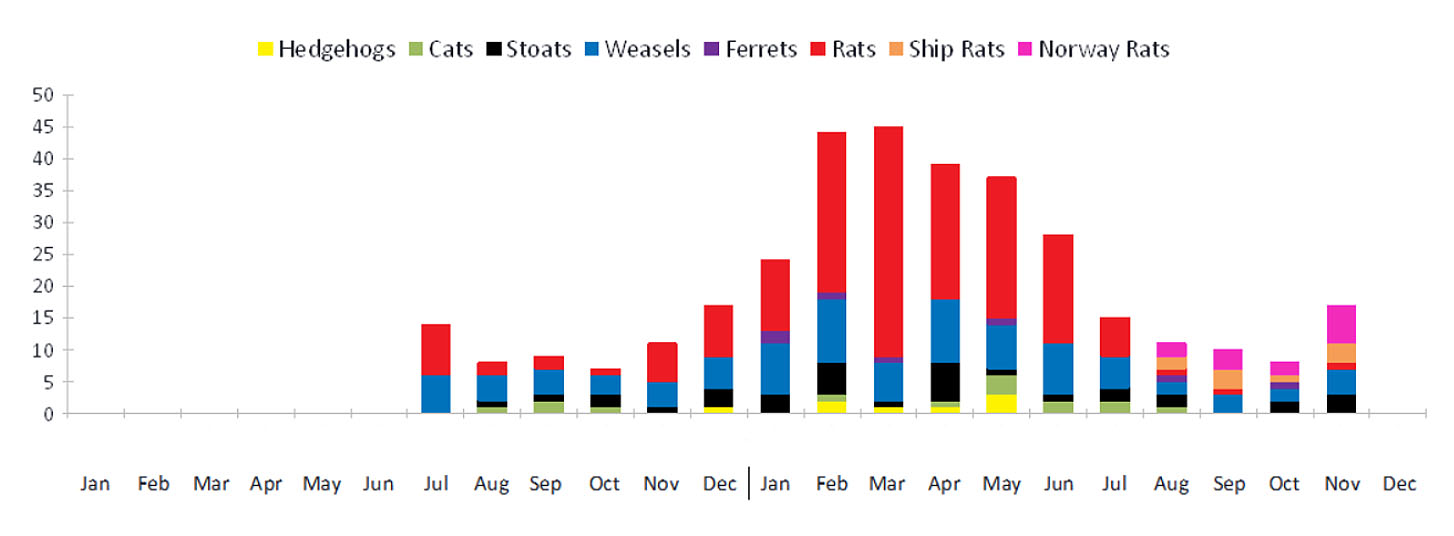
Rats were the main contributor, with most of these being of the Norway variety. The trap lines at the estuary follow the waters edge, so it shouldn’t be a surprise that Norway rats outnumber ship rats. The ship rats were caught in lines G and I which are under trees, the latter line is along the south bank of the river downstream from SH1.
Two stoats were caught on Line J – which runs along the north bank of the river downstream from SH1.
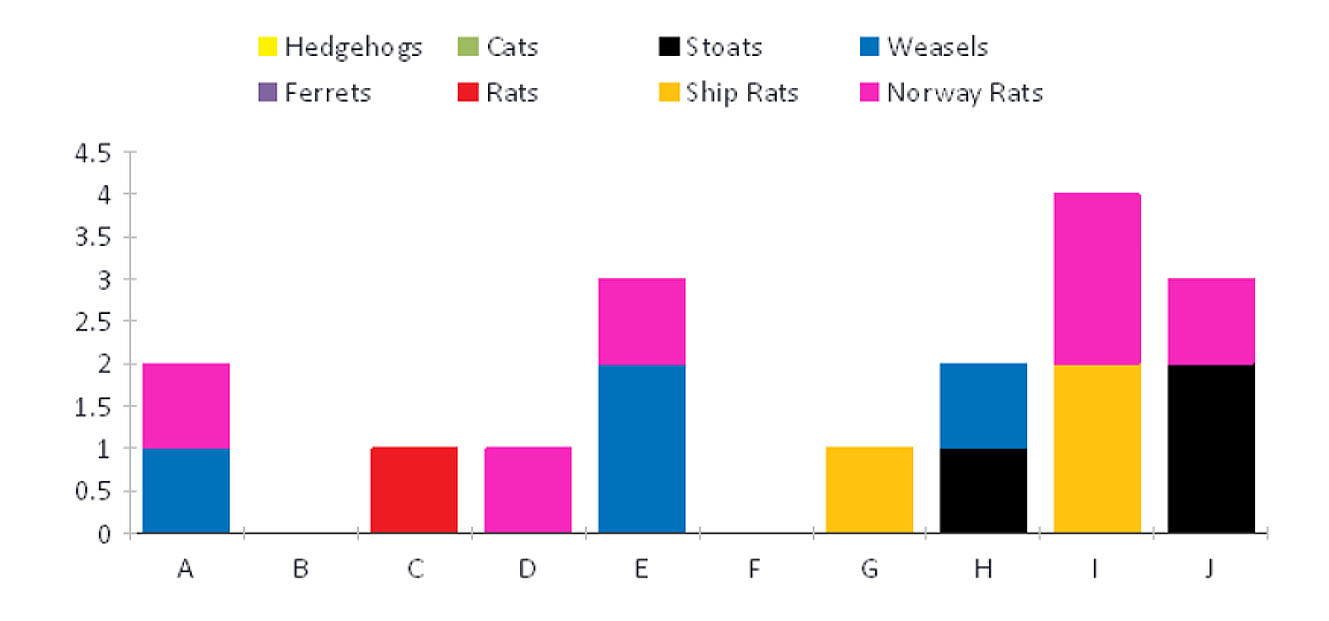
As with the river trapping, there were lines with little or no catch. However we have caught a total of 344 predators since trapping began in late June last year:

Banded dotterel chicks can be easily seen along the southern sand spit, and hopefully pied stilt and variable and pied oystercatchers have also successfully nested at the estuary. There seems a good chance that our trapping has made a difference.

